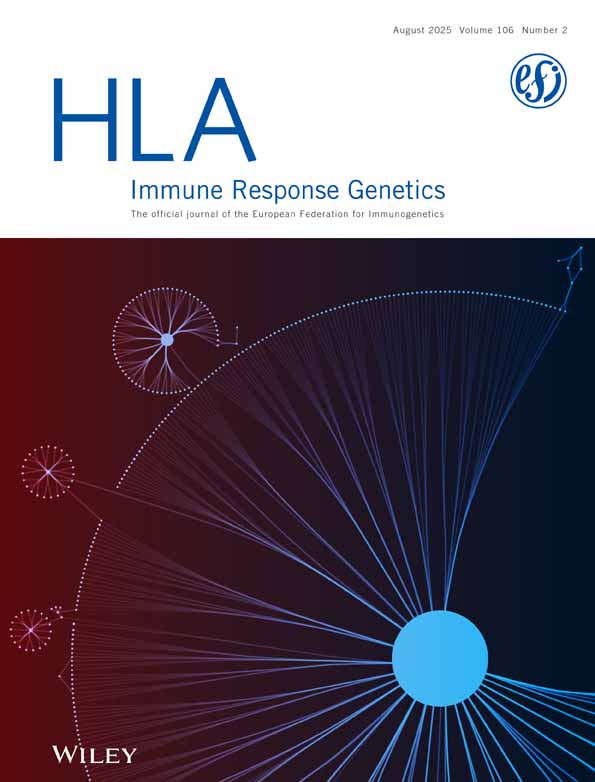HLA-B*8202 identified in a Caucasoid potential bone marrow donor
Abstract
Sequence analysis of HLA class I alleles has continued to reveal the true extent of polymorphism, particularly for B-locus alleles. This diversity can arise through reshuffling of polymorphic sequences generated by point mutation, resulting in interallelic recombination or intergenic recombination ( 1). Here we describe a new B-locus allele, B*8202, which is structurally most similar to B*8201, having only one nucleotide difference in exon 3 at nucleotide 557, resulting in an amino acid change of aspartic acid to glycine at residue 162. Glycine is the consensus amino acid for B-locus alleles, which suggests that B*8202 is older than B*8201 in evolutionary terms. B*8201 was found to be a hybrid of B*4501 and B*5602 that may have arisen through recombination events, explaining the serological patterns observed with these allotypes. The importance of high-resolution typing is emphasised here as routine typing suggested the presence of B*8201 and the new variant allele may have been missed had it not been typed further by sequence-based typing ( Note).




